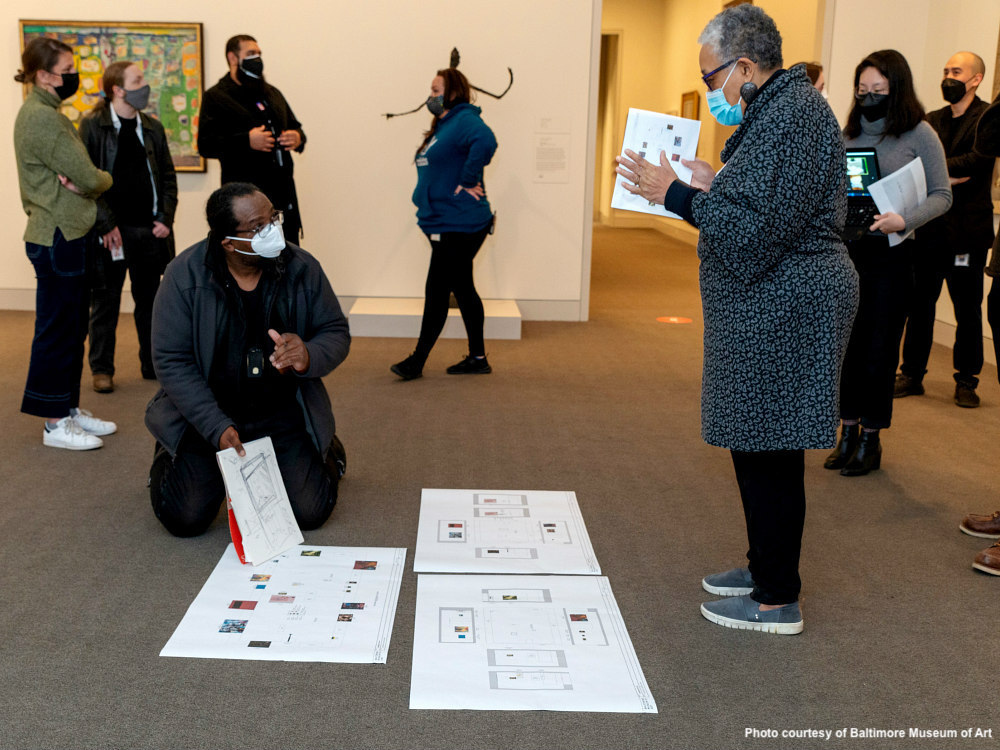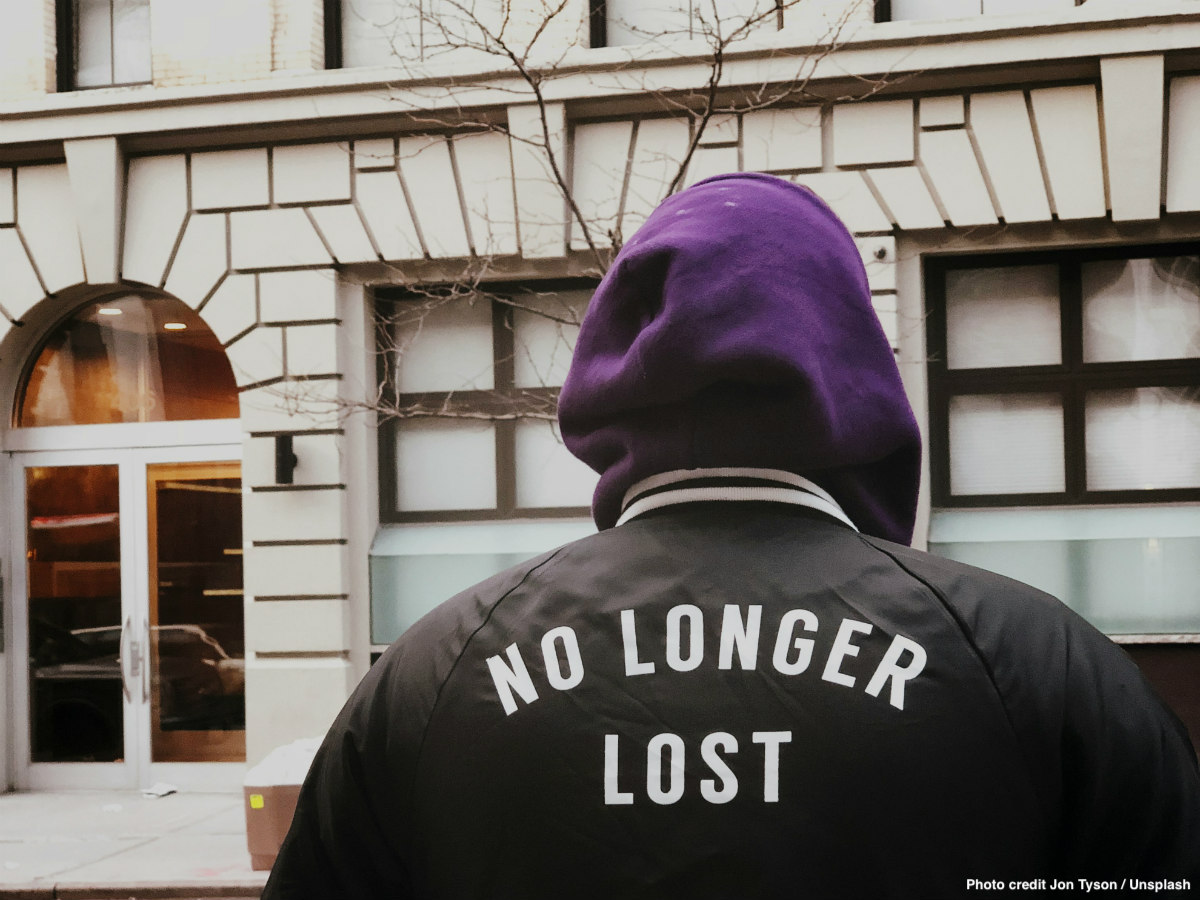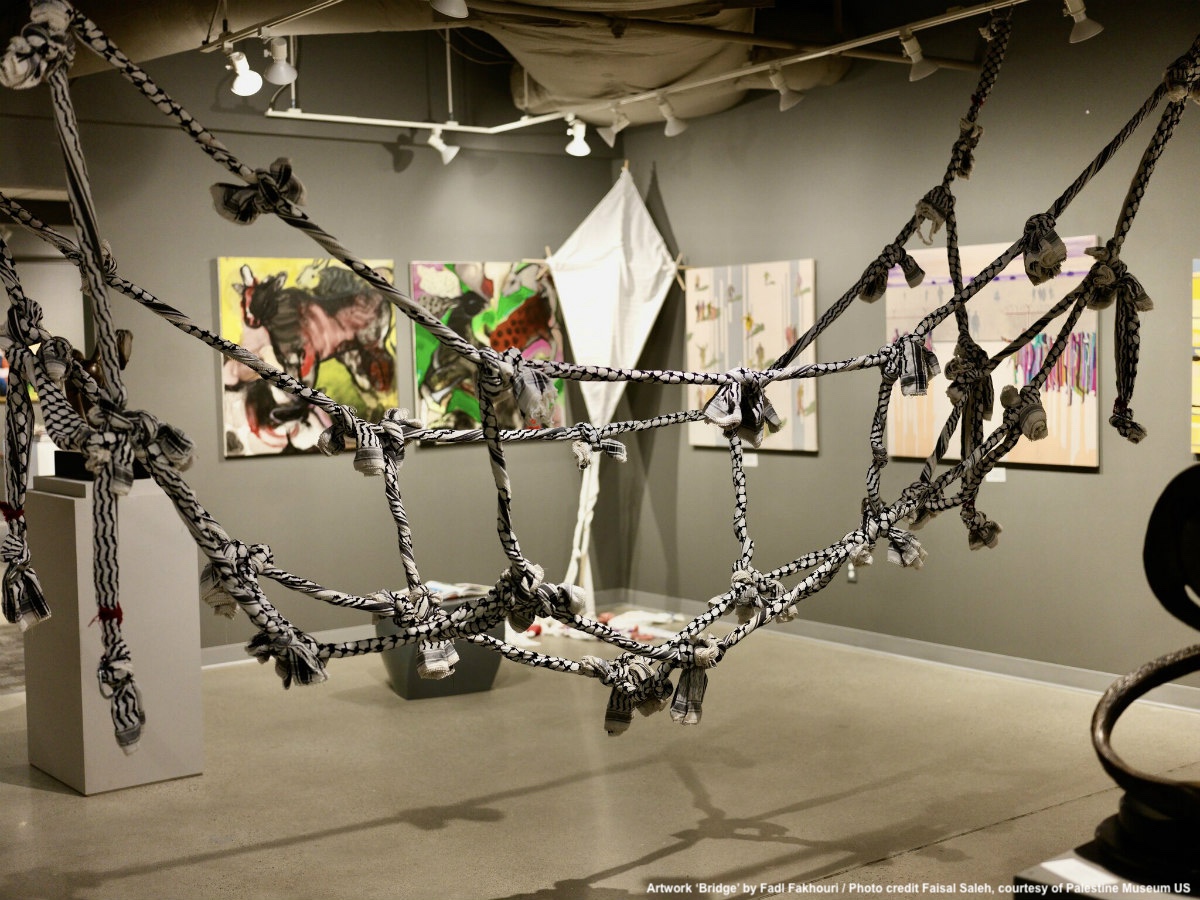The Baltimore Museum of Art, like most art museums, is quiet. It is a maze of large rooms with creaking floorboards and the whisperings of patrons. I’ve always been drawn to the quietness of art museums, silent moments to reflect, sacred spaces. Guards are the silent sentinels of these spaces. Carefully watching and protecting. As visitors, we may take them in as part of the space or a source of information. Yet, these individuals spend more time in these spaces with the art than anyone else at the museum.
Over the last several years, The Baltimore Museum of Art (BMA) has been looking to break out the mold of what it means to be an art museum in the city. Accordingly the BMA has changed its mission and direction. They wanted to better reflect the diverse community around them and how the museum can be more accessible. In 2021, the BMA started a multi-phased program to look at the structure of the museum with a critical eye and figure out ways to be a stronger presence in the Baltimore community. Guarding the Art is an extension of those evolving goals and ideas.
The exhibition started in the minds of BMA Trustee Amy Elias and Dr. Asma Naeem, BMA Eddie C. and C. Sylvia Brown Chief Curator, over dinner in 2020. All were interested in giving more opportunities to the security guards. Both wanted to give a voice to those who live daily with the art but who often go unnoticed. Ultimately, Amy Elias conceived of and pitched the idea for Guarding the Art, an exhibition where BMA guards would choose and curate their favorite art pieces.
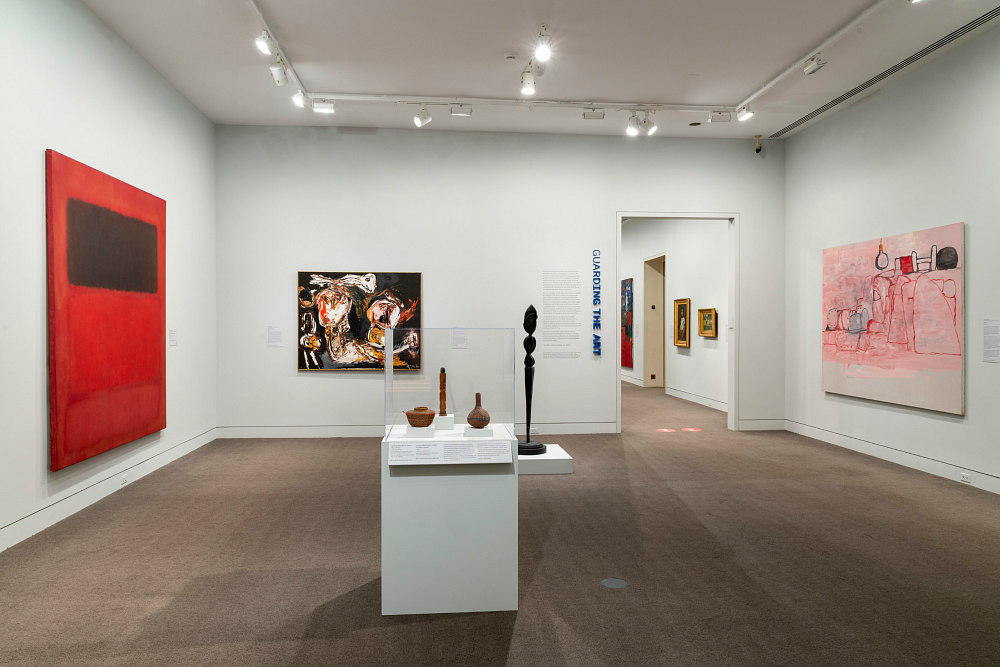
When you walk into the exhibit, it doesn’t feel radical. It feels like any museum exhibit. There are paintings and sculptures in an open room with people roaming and reading labels. With 26 works, it’s a small exhibit which feels appropriate once you start interacting with the art. There is a wide range of styles from vastly different time periods, loud 20th century abstract paintings with their bright overbearing colors in the same room as stone sculptures from the year 500 BCE right beside other works from 2021. The range is not daunting, it gently coaxes you to read their labels.
The labels draw you in. Each one is written by the curating guard, giving insight into why this is the piece they chose. This is where the real magic of the exhibit lives. The guards’ personalities shine through the labels. Many of them feel deeply personal like they are describing a friend, there is a feeling of admiration for their chosen work. Some are rooted in activism like Resist #2 by Micalene Thomas curated by Traci Archibald-Fredrick which depicts images from The Civil Rights Movement in the ‘60s and the protests after the murder of Freddie Gray in 2015. There is a humor and lightness in some which feels like a breath of fresh air. A chuckle at the idea of a chair which can’t ever be sat on that taunts a tired guard or a teapot chosen because of how silly it looks. Others make a statement about art like Winter’s End by Jane Frank curated by Elise Tensley. The work had only been displayed twice in 58 years. Tensley starts her label with “Art is created to be enjoyed and explored, not remain unseen and unknown.”
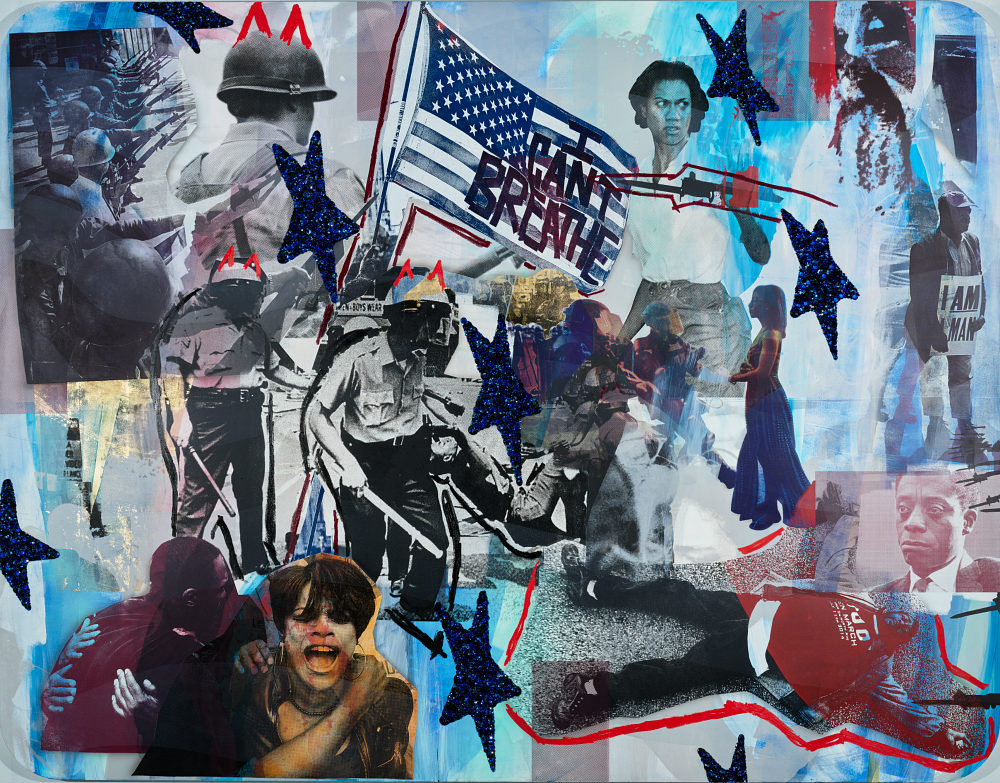
They could have stopped there and just let the guards choose work and write about it, but it’s taken a step further and they were given space to truly curate. Head of Medusa (Door Knocker) by Emile-Antonie Bourdelle is contained in a glass case. The idea and design for the case comes from the curator Michael Jones who had seen so much art mishandled over his 8 years in security and he wanted to protect this piece. Richard Castro chose three small statues from Ecuador, Colombia, and Costa Rica displayed next to each other in display with one plinth left blank for his country Puerto Rico.
When asked what her favorite part of this whole experience was, Dr. Naeem said, it was getting to see each curator’s voice shine through their choices and their words. She said the Rothko Black over Reds [Black on Red] would now always remind her of the curator Chris Koo, who simply wrote “Thoughts?” on the label.
Bringing this show to life was no mean feat. Most shows have one curator, this one has 17. Those involved wanted this to be more than just about picking art and throwing it on the walls. It was about immersing these guards turned curators in every step of the curatorial process. They had to speak to all different levels of museum employees and learn about why certain pieces have to be placed on plinths or how to write a label for the piece of their choosing.
A critical piece to this process was Dr. Lowery Sims, a powerhouse of curator who worked for years at the Metropolitan Museum of Art with a mission to make space for artists of color. She worked closely with the 17 curators to teach them what was essentially a masterclass in curatorial practices. She was able to take in the disparate ideas of 17 people and make it into a vision. She worked with each of them to breathe a little piece of themselves into what they presented. Her mentorship turned what could have been a curiosity or experimental little show into a revolutionary show.
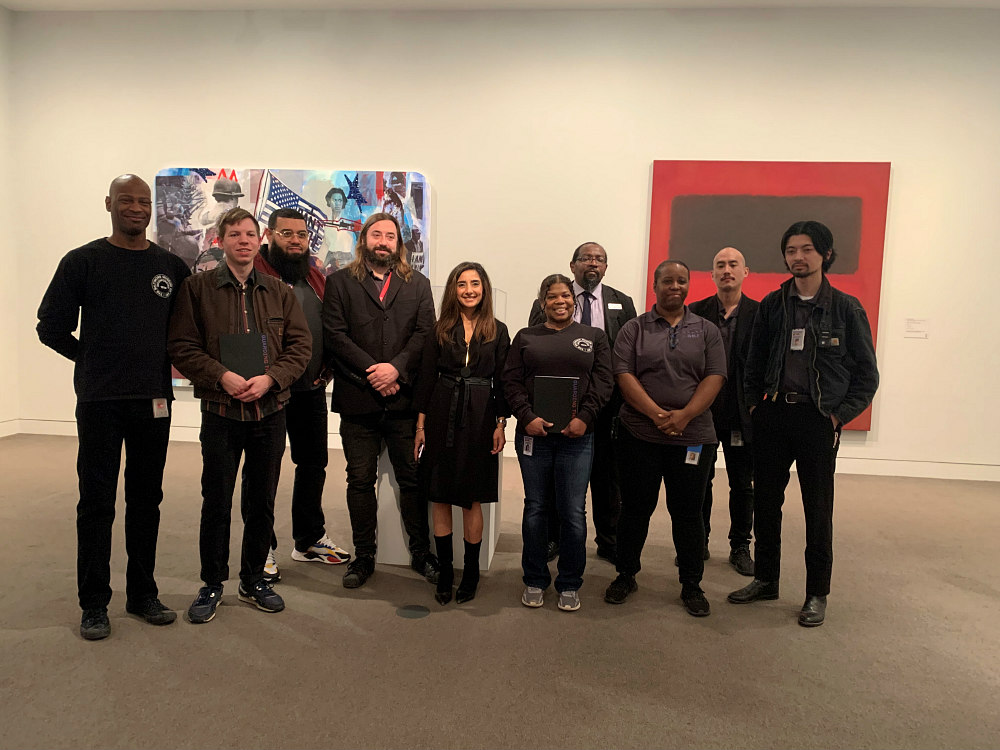
That is what makes this show radical; mentorship. Taking the time and care to show the 17 curators through every step of the process. The exhibit is the final result of a massive amount of learning and work at the museum which could have only been done with the willingness to be part of a community where information and experience is meant to be shared. This show is about recognizing and listening to the people who go unseen everyday at the BMA. It says to the world that the museum desires to create a community founded on communication, understanding, and mentorship.
The reception for this show is unprecedented (and unexpected). They have had more requests for media interviews and tours for this show than any other. They have sold out of their catalogs and the rooms of this show are almost always buzzing with people. It speaks volumes about this art exhibition. It’s simple, but it asks bigger questions. Simple-but-big questions like “Who are museums for?” and “who is art for?” As an art history undergrad, I had class with a lot of people who thought that you needed to know more about the art to truly appreciate it. Guarding the Art laughs at those ideas and dares you to hold those feelings after spending some time with the 17 curators.
Dr. Naeem said they have received countless calls from other museums asking how they could make a show like this. They are working on the idea of making a museum manual on how to put on a show like Guarding the Art to better represent the community. So this might be the start of something revolutionary for institutions in places like Baltimore, placing itching for change in cities.
In my conversation with Dr. Naeem, her eyes would light up when we would talk about how art is for everyone and is meant to be enjoyed by everyone. The joy is felt throughout Guarding the Art, these voices are powerful and loud and excited to be heard.
